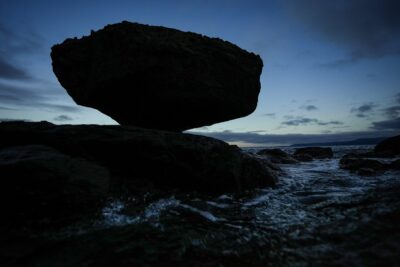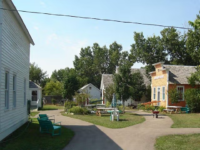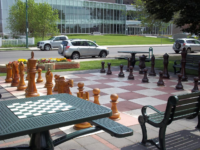Study maps ‘megathrust’ quake zone off northern B.C., but risk may be far in future
By Canadian Press on August 11, 2025.

Scientists have captured the first detailed images of the meeting of two tectonic plates off the coast of northern British Columbia, an area they say has the potential to generate the largest “megathrust” earthquakes and tsunamis.
The images confirm what appears to be a rare geological occurrence, a subduction zone in its “infancy,” the study by U.S. and Canadian researchers shows.
The paper, in the peer-reviewed journal Science Advances, says the Queen Charlotte plate boundary features the beginnings of such a zone, where one plate slides under the other.
The plate boundary that extends from the southern tip of Haida Gwaii to southeast Alaska was the site of Canada’s two largest earthquakes in recent history — a magnitude-8.1 quake in 1949 and the magnitude-7.8 quake in 2012.
Co-author Michael Bostock, a professor in the department of earth, ocean and atmospheric sciences at the University of B.C., says it’s likely the area will see more “thrust” quakes, and the next one could be larger as the fault grows.
The good news for people living on B.C.’s north coast, he says, is that a quake of similar magnitude to the one in 2012 isn’t likely for several hundred years.
“In a sense, the concern is passed, at least for the next few generations of people.”
The quake in 1949 was caused by tectonic plates moving side by side along a fault, known as a “strike-slip” earthquake. These are far less likely to produce tsunamis.
The 2012 quake, meanwhile, bore hallmarks of subduction, which produces the largest megathrust quakes. But until the study published last month, there was no detailed imaging confirming it, says Bostock.
“Megathrust is just a fancy name for a thrust fault, a shallow-dipping thrust fault, where subduction is taking place. So, yes, what we’re imaging here is a nascent megathrust.”
Recent megathrust earthquakes include last month’s 8.8-magnitude quake off the coast of southeast Russia, and the massive quakes that triggered devastating tsunamis off Japan in 2011 and Indonesia in 2004.
Prior to the 2012 quake off Haida Gwaii, researchers had been debating whether subduction was a feature of the Queen Charlotte plate boundary, Bostock says.
The quake strongly suggested an “under-thrusting fault,” and the detailed imaging has confirmed it, he says.
“The geometry of the Haida Gwaii thrust suggests that larger thrust earthquakes could nucleate along the margin and that tsunamis could be more common, both of which substantially increase the hazard of the region,” the paper says.
The site is a “rare example” of the beginnings of subduction, with the imaging “capturing this fundamental tectonic process in its infancy,” it says.
Still, it says the future of the Queen Charlotte plate boundary is uncertain.
“While it has efficiently evolved to its current state, subduction initiation can fail at any stage before self-sustained subduction is reached; thus, the (plate boundary) evolving to this point does not guarantee a future outcome,” the paper says.
Bostock says there’s debate about how quickly the Pacific plate is moving into the North American plate, but it’s somewhere between 1/2 and 2 1/2 centimetres per year, along a roughly 200-kilometre stretch off the Haida Gwaii coast.
By contrast, the Cascadia subduction zone spans about 1,000 kilometres from northern Vancouver Island to northern California, and the tectonic plates are converging at a faster rate, closer to four centimetres per year, he says.
The Cascadia zone is expected to produce a massive quake sometime in the next 200 to 500 years — but that’s not likely at the Haida Gwaii site, Bostock says.
“So, because it’s a smaller fault area, and because the convergence is smaller, something like half as much as it is in Cascadia … we’re not likely to have another big (megathrust) earthquake off of Haida Gwaii in the near future.”
The relatively smaller size of the fault off Haida Gwaii limits the size of quakes it may produce, Bostock adds.
The 7.8 quake in 2012 is “probably as big as we’re likely to get, unless the zone grows bigger,” which it may do over a long period of time, he says.
The quake in 2012 rattled much of north-central B.C., including Haida Gwaii, Prince Rupert and Quesnel, and triggered a tsunami warning for coastal areas.
It also altered the flow and temperature of culturally important hot springs on a small island within the southeast Haida Gwaii archipelago.
Lindsay Worthington, another co-author of the paper, says the site offers a “natural laboratory” for the study of plate boundaries, describing it as “one of the only places on the planet” where researchers can observe subduction in its infancy.
The images were captured in “unprecedented” detail by dragging a 15-kilometre-long hydrophone array behind a ship.
“Without knowing really what the subsurface looks like, there’s only so much that you can infer,” says Worthington, a professor in the department of earth and planetary sciences at the University of New Mexico.
“Now that we have these pretty definite geometries … we can have better understanding of what types of events happened in the past, and then that gives you insights into what’s possible in the future.”
While a giant earthquake is not imminent off Haida Gwaii, Worthington says the Queen Charlotte plate boundary is still “the largest natural hazard in Canada.”
This report by The Canadian Press was first published Aug. 11, 2025.
Brenna Owen, The Canadian Press
35-34




